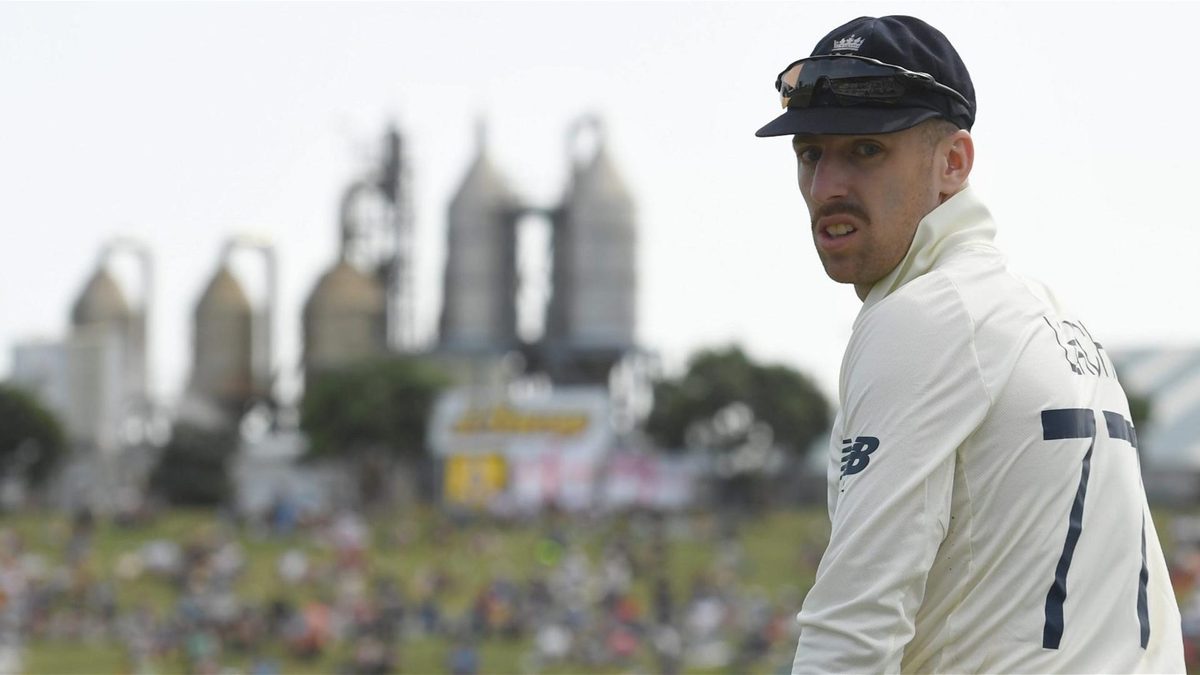
Jack Leach bounced back from a poor start with the ball to take his second Test five-for for England against Sri Lanka at Galle, writes Ben Gardner.
England are all too familiar with the unfamiliar. On a one-team mission to keep Test cricket alive, they have snatched victories when they had no right to, given away eight-fors to part-timers, and invented and discarded whole new ways of playing Test cricket inside a single season.
The rocky start to their chase in the first Test against Sri Lanka was another classic entry into the canon, replete with Dom Sibley bowled leaving for the second time in three series openers, and a run out comical in two or three different ways. But even before that you could scratch beneath the surface of what seemed like it would be relatively routine win and allow the oddity to reveal itself. This was a game where England will be more pleased with their performance in bowling a team out for 359 than for 135, where a match-winning total of 421 still contained a collapse of 5-34, and where one of their best spinners bowled perhaps as badly as he has in an England shirt, and still ended up with a hugely impressive five-for.
There was a point in the morning session when Dom Bess and Jack Leach were struggling so much that Rob Key, on Sky Sports Cricket commentary, was reduced to counting consecutive good deliveries bowled by England’s twirlers. He never got past four.
Sri Lanka were completely untroubled. Lahiru Thirimanne, by one measure the worst batsman in Test history coming into this innings, cruised serenely to a first hundred in seven years and 54 innings. The host broadcaster started showing scorecards of Sri Lankan comebacks past, with one Galle game turned around gaining particular attention; back in 2015, India earned a lead of over 200 only for a Dinesh Chandimal blitz to set Virat Kohli’s side 176 to win. A Rangana Herath seven-for ensured they wouldn’t make it more than two-thirds of the way there.
For a time, this game really did feel similar. Sri Lanka had shrugged off their woeful performances on days one and two, run through England’s tail, and knocked off the deficit without fuss. Stuart Broad bowled skilfully and Mark Wood quickly, but both were rendered ineffective by the surface. Sam Curran, as ever, made things happen, finding Thirimanne’s inside edge just before lunch. And Bess and Leach struggled, for both line and length. It felt like England were in for some very long days when they reached India.
There were mitigating factors for both, of course. For Bess, this is his first Test in the subcontinent, and he was due an evening out of fortunes after claiming a comical five-for in the first innings. And for Leach, this was a Test return coming on the back of more than a year of illness and ill-fortune, in which he feared for his life after contracting sepsis in New Zealand and had to deal with being clinically vulnerable during a pandemic. Between his last two Test appearances he played just two first-class games and claimed three wickets at 37.33. It’s through no fault of his own that he was undercooked, but undercooked he was.
Still, there were always reasons to believe he would turn his form around, that all he needed was time to get himself right. There was his already impressive Test record, which included an average better than Graeme Swann’s, a match-winning five-for in Sri Lanka, and 12 wickets at 26 in a drawn Ashes series. And there was his resilience, which had already been on show in getting him onto the pitch in Galle in the first place. He has demonstrated it plenty before, remodelling his action after the ECB raised suspicions and defying Pat Cummins and Josh Hazlewood at Headingley, and this performance, really, was Leach’s career in microcosm. The adversity, the resistance, the improvement, and finally the triumph.
Joe Root deserves credit too, constantly exhorting Leach and the rest of his charges, and whatever he said at lunch clearly worked perfectly. Bess nicked off Dinesh Chandimal three balls after the break, Broad began a ridiculously parsimonious spell of five overs for one run, and England pegged Sri Lanka back. It still took an hour, and three overs of bowling himself, before Root returned to Leach, and the left-armer looked back to his old self, with snap in his action, action on the ball, and increased pace.
Before long Dasun Shanaka had yorked himself, deceived in the flight. More tight overs followed, and then Wanindu Hasaranga nicked to slip. Dilruwan Perera took him on, but this time Leach held his nerve, spinning one sharply to have him stumped. And finally, Angelo Mathews was caught in two minds to give Leach a hugely deserved five-for that seemed miles away halfway through the day.
In that afternoon session, England claimed 60-3 in 29 overs, a combined team effort that bodes well for the challenge in India. There, they will bowl far better than they did in the first session for less reward, and it’s only through putting them to one side, building pressure and staying calm that they will give themselves chances.
It’s important still to manage expectations. Leach spoke of being exhausted after play, and as he returns to full match fitness there might be more struggling spells to follow. It will take more than just consecutive good balls or even overs to make inroads into India. For Cheteshwar Pujara, even consecutive shotless sessions aren’t always enough to draw him out of his reverie. Rohit Sharma is second only to Don Bradman for his home average. Virat Kohli is Virat Kohli.
But Leach’s performance offers hope, perhaps for England to mount more of a challenge in India than anyone expected, but also, more importantly, that a promising career that had drifted off course might just be getting back on track.








